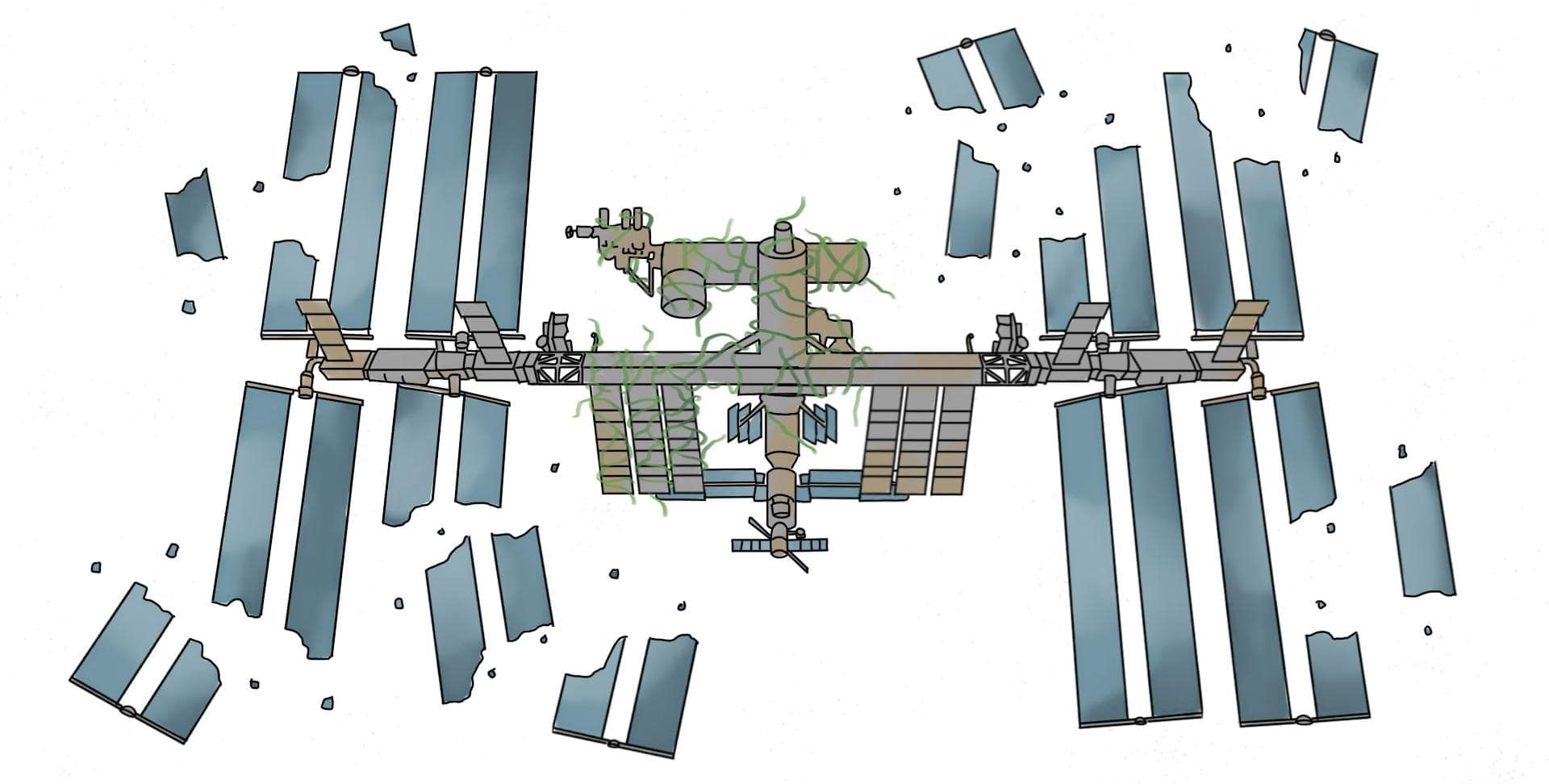The International Space Station is Aging
After nearly 23 years, the International Space Station (ISS) is showing signs of deterioration.
Reading Time: 3 minutes

Imagine a six-bedroom house with two bathrooms, a personal gym, and a 360-degree view window displaying the stars. Now imagine it floating in space. It seems like a fantasy, like something straight out of Star Trek, but it is real and has been for nearly 23 years. This is the International Space Station (ISS).
The ISS is a ginormous hunk of metal, nearly as long as a football field, that orbits the Earth 16 times a day. The ISS has been continuously occupied by astronauts and the occasional spiders, mice, and tardigrades since 2000. Experiments have been conducted over the years to advance the fields of medicine, quantum mechanics, and biology, to name a few. After more than two decades, however, recent leakages and cracks lead some to believe that the ISS is approaching its final days. While the space station was built with a 10 to 15 year life span, it is pushing twice that age and is currently cleared to operate up until 2024. That six-bedroom house does not sound as amazing if air were to start leaking out of it.
Issues aboard the ISS are not new; several pieces of essential equipment broke down in October, 2020, including a toilet, oxygen generator, and oven. Earlier that day, the astronauts onboard found and patched a miniature hole leaking air. In another incident in August 2021, the ISS spun 540 degrees around when a module mistakenly fired its thrusters, taking an hour for the crew to regain control of the system. Additionally, the National Aeronautics and Space Administration (NASA) lost contact with the station twice, totaling 11 minutes of no communication. This may not seem like a lot, but every second counts during such dangerous events. These issues are too serious to be overlooked, and it would be irresponsible to not take further precautions when dealing with air leakages and oxygen generators.
If engineers decide to disassemble the ISS, it has to be done safely. One such method involves a controlled reentry into Earth’s atmosphere and several predetermined crash landings in the ocean. NASA most certainly does not want a repeat of the Skylab incident. The agency’s first space station, Skylab, was scheduled to get a boost from an incoming space shuttle. However, extensive delays of the launch caused Skylab to slowly fall out of orbit. In 1979, the station reentered Earth’s atmosphere with no prediction of where the debris would hit. It could have hit the vast ocean or a densely populated city. Luckily, the pieces ended up in the limitless deserts of Australia, hurting no one.
For the future, China has ongoing plans for its own space station several times smaller than the ISS. In fact, the foundations of the Tiangong space station are already being built. While officials in China have stated that the Tiangong will be open to astronauts from other countries, American astronauts will most likely be excluded, due to a 2011 decree passed by U.S. lawmakers that banned direct coordination between NASA and any Chinese-owned company. As of now, NASA has no plans to build a replacement for the ISS, other than crafting a lunar space station that will orbit the moon for their future Artemis missions.
It will only be a matter of time before the ISS is decommissioned and countries start jumping at the chance to build their own stations. In fact, Russia wishes to build its own space station by 2025. The advantage of having several small space stations is that each country can focus on a particular goal, whether it be studying the effects of space on the human body or developing new technology. Additionally, if one station were to malfunction, there would be others to resort to. However, multiple space stations would also hinder global cooperation and may even be dangerous. Compared to international stations, individual stations would have less supervision in their development. Without the proper safety regulations, countries could potentially be sending haphazard vehicles 250 miles above humanity.
Regardless of the benefits and harms of countries building their own small space stations in comparison to having one large international station, there will ultimately be no shortage of science experiments and revolutionary breakthroughs anytime soon.
